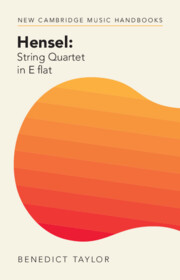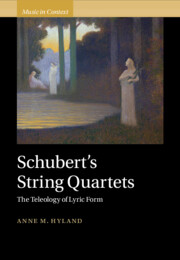Refine search
Actions for selected content:
7 results
Chapter 27 - Schoenberg’s Performers
- from Part VII - Performers and Critics
-
-
- Book:
- Schoenberg in Context
- Published online:
- 04 September 2025
- Print publication:
- 04 September 2025, pp 267-275
-
- Chapter
- Export citation
3 - Zarathustrian Transfigurations
-
- Book:
- Anton Webern at the Dawn of Modernism
- Published online:
- 21 August 2025
- Print publication:
- 04 September 2025, pp 58-84
-
- Chapter
- Export citation
5 - Lyrical Temporality
-
- Book:
- Anton Webern at the Dawn of Modernism
- Published online:
- 21 August 2025
- Print publication:
- 04 September 2025, pp 94-113
-
- Chapter
- Export citation

Hensel: String Quartet in E flat
-
- Published online:
- 07 December 2023
- Print publication:
- 30 November 2023

Schubert's String Quartets
- The Teleology of Lyric Form
-
- Published online:
- 13 April 2023
- Print publication:
- 20 April 2023
2 - Listening for the Intimsphäre in Hans Pfitzner’s Symphony in C♯ Minor
-
- Book:
- Interwar Symphonies and the Imagination
- Published online:
- 28 January 2023
- Print publication:
- 26 January 2023, pp 45-82
-
- Chapter
- Export citation
Chapter 33 - Britten’s Performers: Those Most ‘Instrumental’
- from Part IV - Wordsmiths, Designers, and Performers
-
-
- Book:
- Benjamin Britten in Context
- Published online:
- 31 March 2022
- Print publication:
- 21 April 2022, pp 292-300
-
- Chapter
- Export citation
